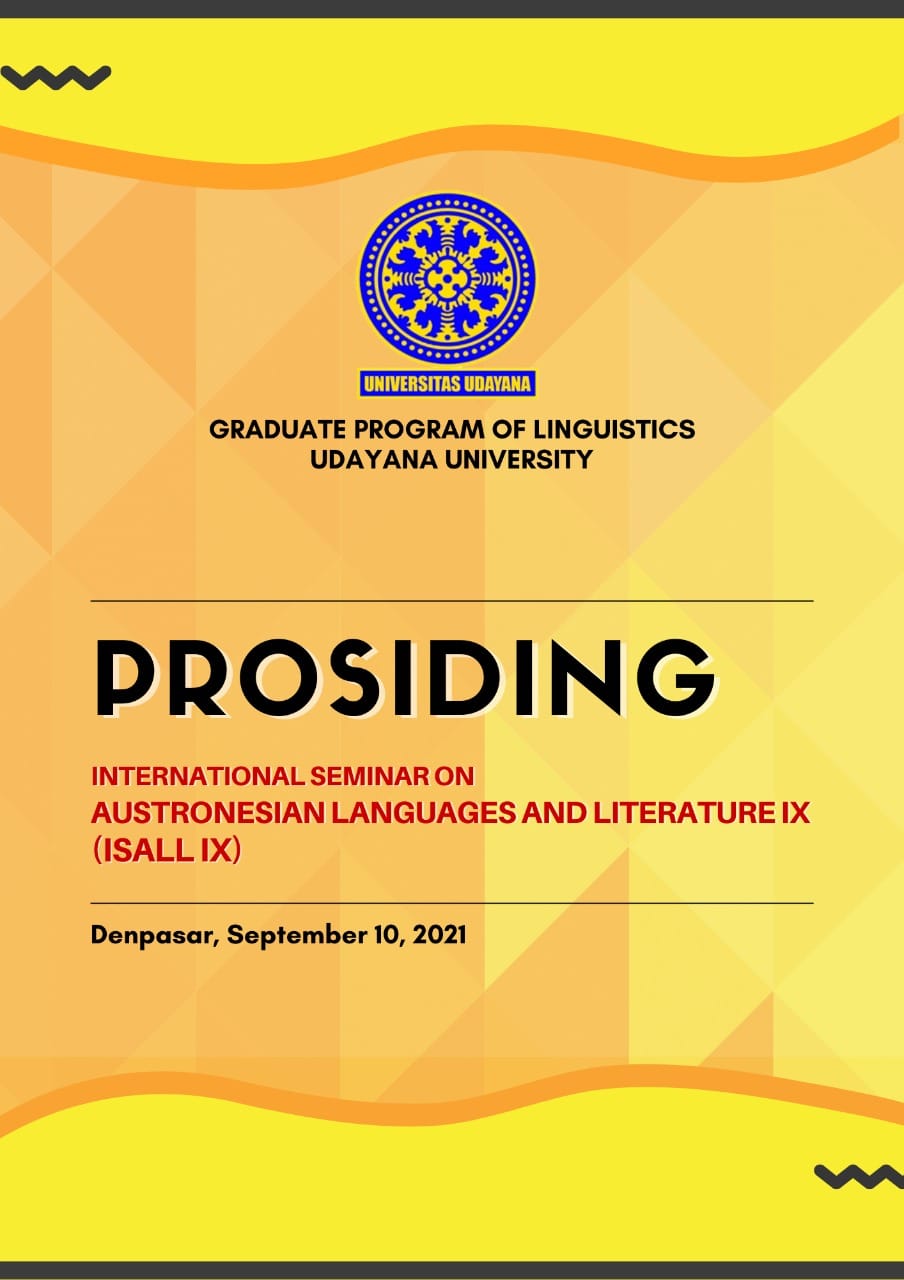Klausa Utama Berkonjugasi Maka Dalam Bahasa Melayu Klasik
Abstract
This paper discusses the construction of complex sentences in Classical Malay in which the two clauses are conjunctive, each marked by setelah ‘after’ and maka ‘then’. Furthermore, the analysis will prove that clause using conjunction maka ‘then’ is as the main clause and clause using the conjunction setelah ‘after’ is as the subordinate clause. Two other things that will be discussed are the syntactic and semantic characteristics of the complex sentence construction. Data is collected from classical Malay text, namely a book entitled Sedjarah Melaju (Situmorang and A. Teeuw, 1958). Data were collected using observation methods and note-taking techniques, syntactic analysis was carried out by using the intralingual equivalent method with the permutation technique and the deletion technique, semantic analysis was carried out by using the extra-ligual equivalent method, and the presentation of the analysis results was carried out by using formal and informal methods. Based on the results of the discussion, three main points were found regarding the construction of complex sentences in classical Malay, in which both clauses use conjunction (setelah 'after' and maka 'then'): (1) a clause that uses the conjunction maka 'then' as the main clause and a clause that uses the conjunction setelah 'after' as an adverbial clause, (2) syntactically the order is fixed (adverbial clause setelah 'after' + main clause maka 'then' ), (3) semantically the relationship between clauses expresses sequential time.
References
Hollander, J.J. de. (1984). Pedoman Bahasa dan Sastra Melayu. Jakarta: PN Balai Pustaka.
Kroeger, Paul R. (2004). Analysing Syntax: a Lexical-Functional Approarch. Cambridge, United Kingdom: Cambridge University Press.
Kroeger, Paul R. (2005). Analyzing Grammar: An Introduction. Buku Elektronik. New York: Cambridge University Press.
Ophuijsen, Ch. A. Van. (1983). Tata Bahasa Melayu. Jakarta: Penerbit Djambatan.
Spat, C. 1989. Bahasa Melayu: Tata Bahasa Selayang Pandang. Jakarta: Balai Pustaka.
Wijk, D. Gerth van. 1985. Tata Bahasa Melayu. Jakarta: Penerbit Djambatan.


